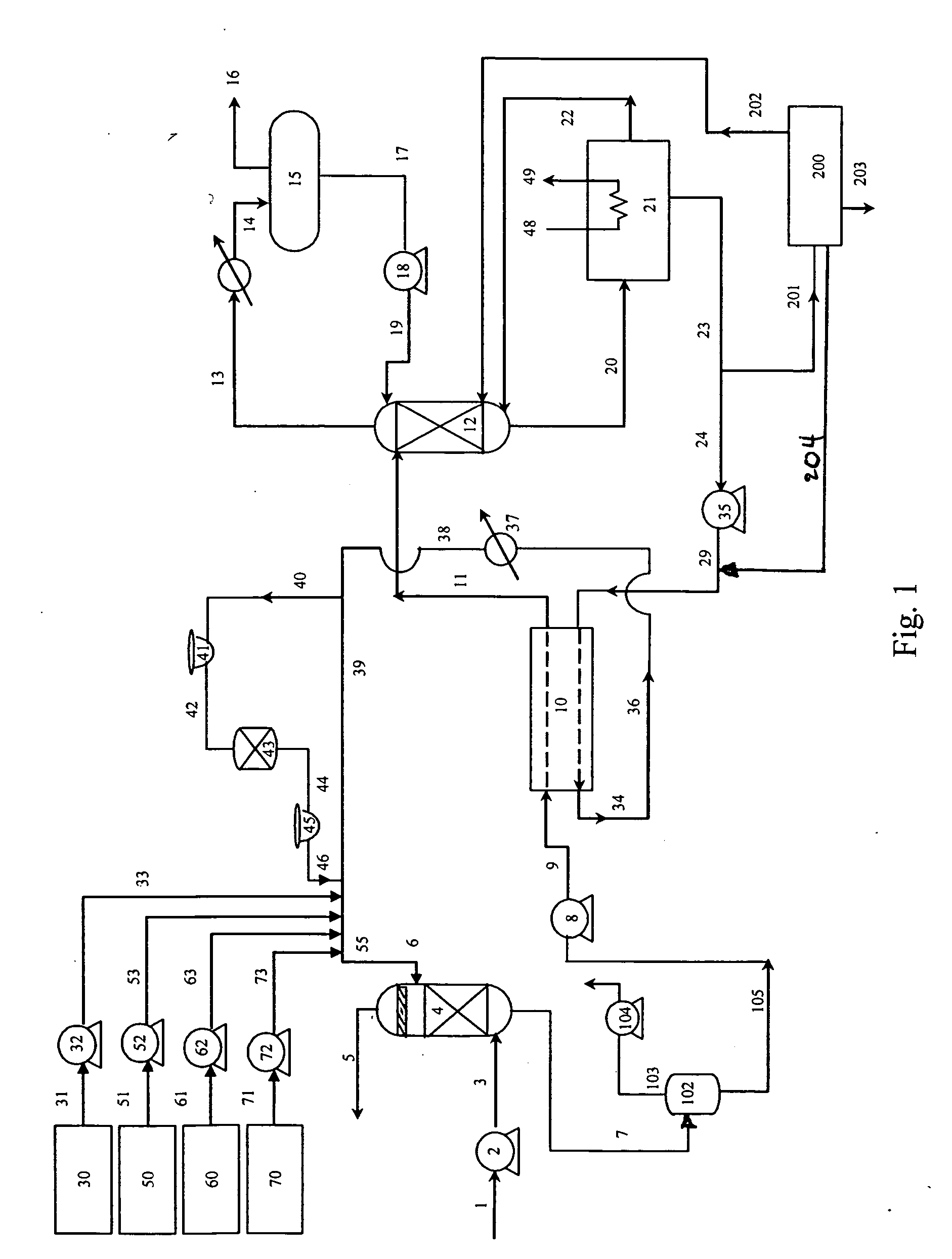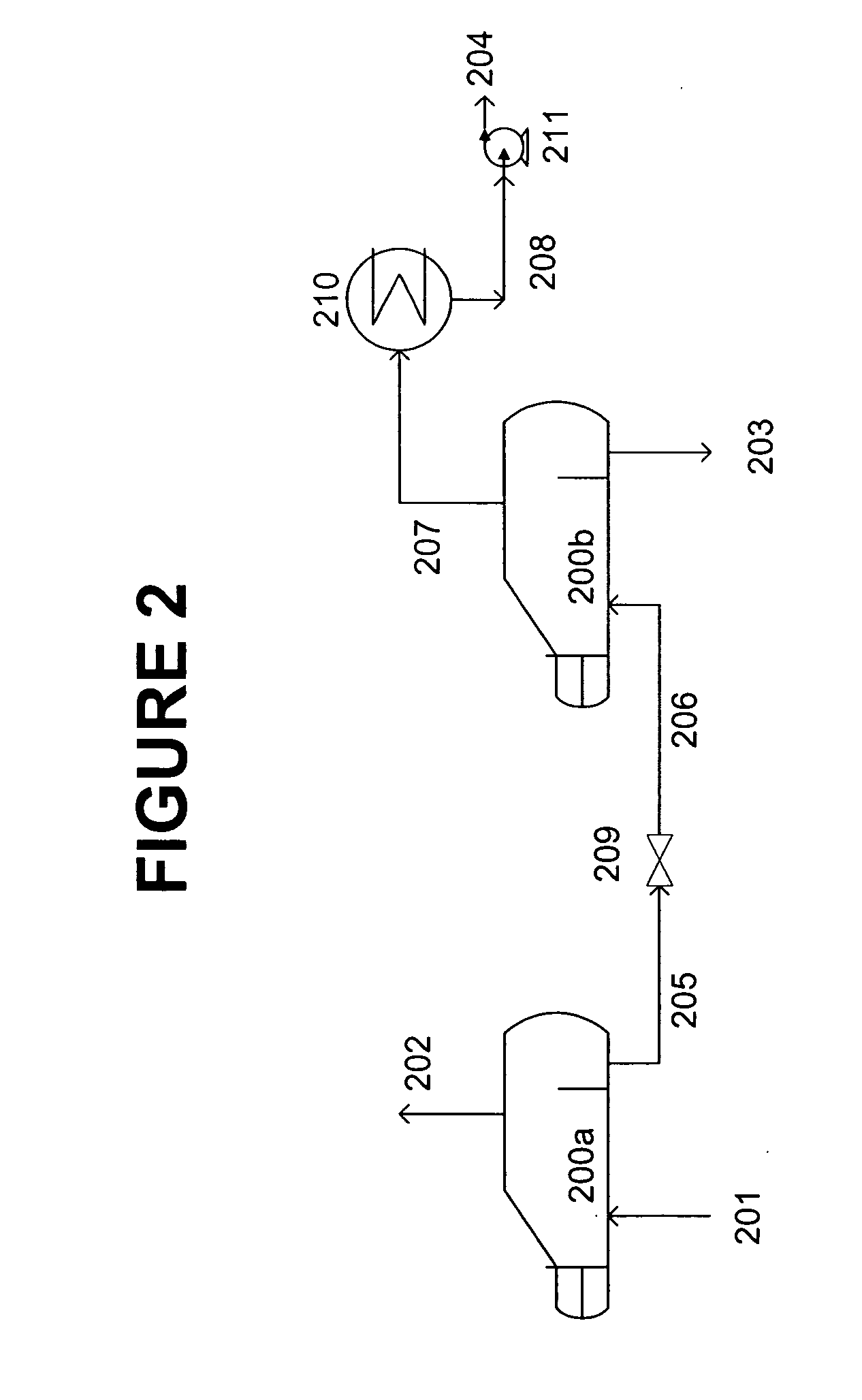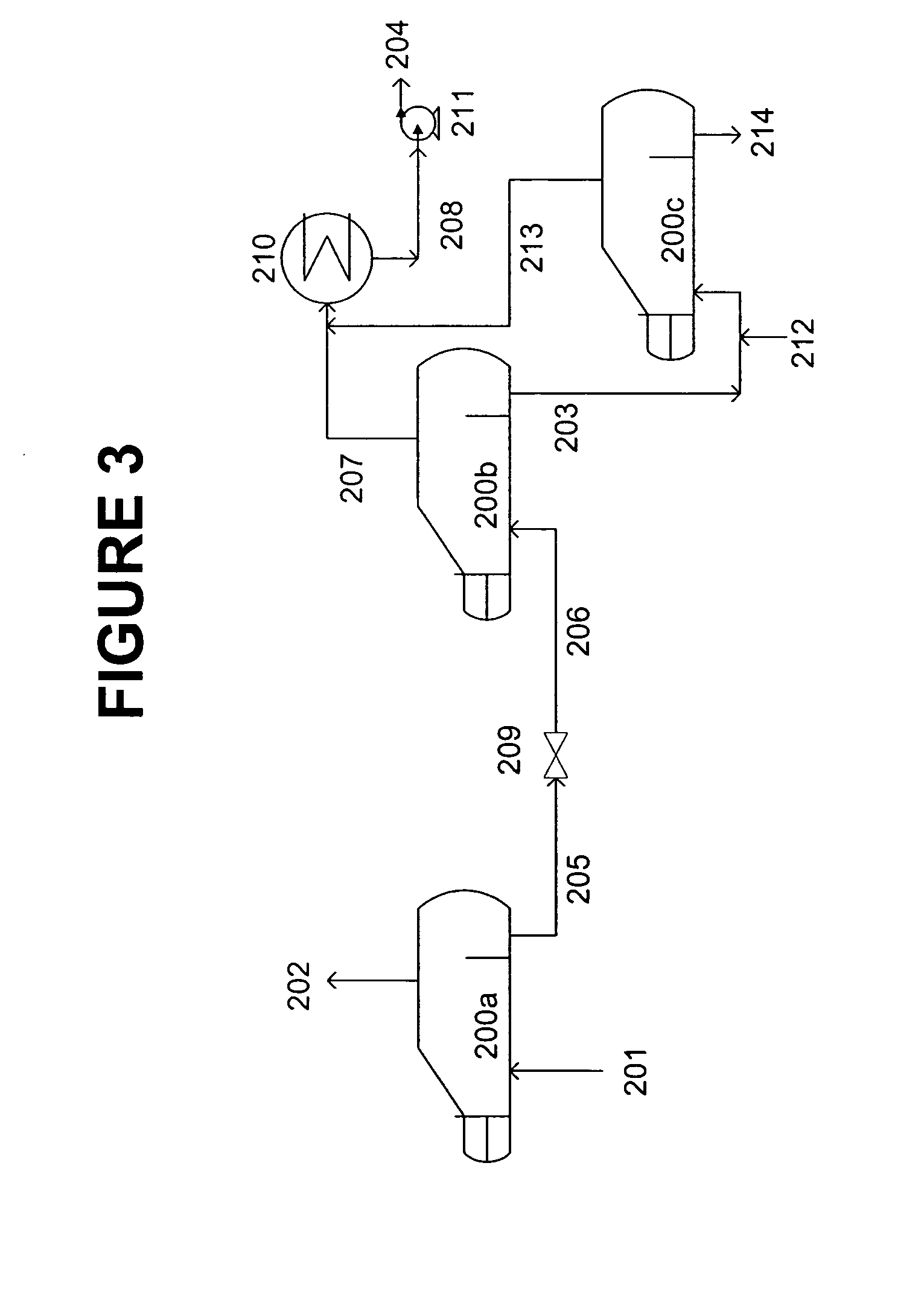Reclaiming amines in carbon dioxide recovery
a carbon dioxide and amine technology, applied in the field of carbon dioxide recovery, can solve the problems of high transportation cost, high waste, and degradation of amine(s) and other components of the absorbent, and achieve the effect of reducing the cost of transportation and reducing the cost of production
- Summary
- Abstract
- Description
- Claims
- Application Information
AI Technical Summary
Benefits of technology
Problems solved by technology
Method used
Image
Examples
examples
[0080] Performance and operating conditions, as predicted by process simulation, are shown for a 100 MTPD CO2 absorption system using as absorbent a solution containing 30 wt % MEA, 20 wt % MDEA, 50 wt % water and containing about 2 wt % of heat stable salts. [0081] Type of Reclaimer: Continuous 3-stage with water addition to 3rd stage
Feed rate of absorbent stream: 10 gpm
Temperature of First Vaporization Stage: 290 deg F.
Pressure of First Vaporization Stage: 25.2 psia
Heat to First Vaporization Stage: 2.331 MMBTUH (recoverable)
Temperature of Second Vaporization Stage: 290 deg F.
Pressure of Second Vaporization Stage: 1.4 psia [0082] Heat to Second Vaporization Stage: 0.998 MMBTUH (not recoverable)
Temperature of Third Vaporization Stage: 290 deg F.
Pressure of Third Vaporization Stage: 1.4 psia
Water Addition Rate to Third Vaporization Stage: 32 lb / hr
Heat to of Third Vaporization Stage: 0.053 MMBTUH (not recoverable)
PUM
 Login to View More
Login to View More Abstract
Description
Claims
Application Information
 Login to View More
Login to View More - R&D Engineer
- R&D Manager
- IP Professional
- Industry Leading Data Capabilities
- Powerful AI technology
- Patent DNA Extraction
Browse by: Latest US Patents, China's latest patents, Technical Efficacy Thesaurus, Application Domain, Technology Topic, Popular Technical Reports.
© 2024 PatSnap. All rights reserved.Legal|Privacy policy|Modern Slavery Act Transparency Statement|Sitemap|About US| Contact US: help@patsnap.com










